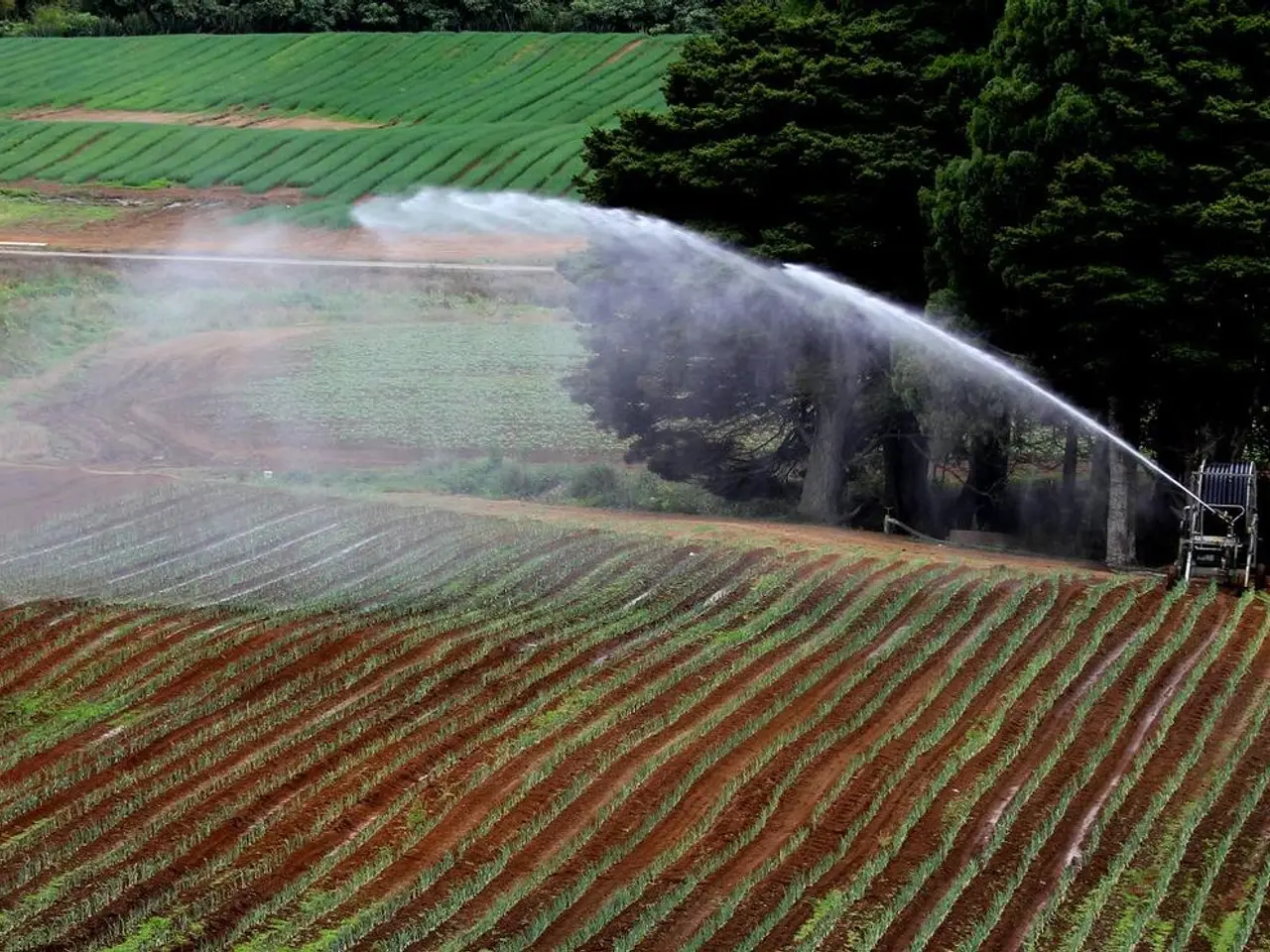Harsh Desert Environments Support Thriving Fruit Groves: Agriculture in Severe Climates
Sheltered Orchard Farming in Arid Regions Boosts Crop Production and Ecosystem Resilience
In a bid to enhance sustainable crop production in arid regions, sheltered orchard farming is gaining traction as an effective solution. This innovative farming method integrates tree species strategically to create shelterbelts or layers that reduce wind stress, conserve soil moisture, and foster biodiversity.
The Advantages of Sheltered Orchard Farming
Sheltered orchards offer several key benefits. Trees such as ironwood and desert willow act as nurse plants, providing shelter for more sensitive species and reducing wind erosion and physical damage to crops. By reducing evapotranspiration through windbreak effects, sheltered orchards enable deeper, less frequent irrigation, and can incorporate rainwater catchment systems, thus minimizing overall water use in arid environments.
Improved soil fertility and structure are also achieved through practices like chop-and-drop mulching, composting, and biochar use. These methods enhance soil organic matter and microbial activity, which improve soil structure and nutrient cycling. Layered plantings create cooler, more stable microclimates that protect crops from heat extremes and frost risk, improving yield consistency. Diverse plantings attract pollinators and beneficial wildlife, enhancing ecosystem health and crop pollination efficiency.
Best Practices for Implementation
To reap the benefits of sheltered orchard farming in arid zones, it's crucial to follow best practices. This includes species selection, deep and infrequent irrigation, soil preparation and mulching, layered planting design, integrated pest and wildlife management, site preparation, and careful maintenance.
Using drought- and wind-tolerant native or adapted trees as shelter layers or nurse plants is essential, as is shifting irrigation strategies to deeper watering cycles that encourage robust root growth and reduce water waste. Soil preparation involves amending soils with organic matter, compost, and biochar to enhance fertility and moisture retention, and applying mulch for soil insulation and weed suppression.
Layered planting design creates multiple canopy layers to moderate wind speed, insulate soil, and optimize land use for both shelter and crop production. Integrated pest and wildlife management includes fencing and boundary plantings to protect orchards from wildlife damage while promoting beneficial species. Site preparation involves conducting grading, erosion control, and drainage optimization to ensure soil stability and efficient water use.
A Promising Future for Desert Orchards
By combining these practices, sheltered orchard farming in arid zones not only improves crop productivity but also enhances ecosystem resilience and resource conservation in challenging environments. Agroforestry and regenerative farming are becoming key for desert orchards, mixing trees, crops, and animals to create strong, diverse systems that can handle the desert's harsh weather.
More people want different and green food choices, boosting demand for desert crops like dates, pomegranates, and pistachios. Starting orchards in the desert can be profitable with smart planning and new ideas, despite high initial costs for wind protection, irrigation, and specialized cultivation.
Innovations in desert farming offer hope against desertification. By using the latest tech and green methods, farmers can create thriving orchards and farms that live in harmony with the desert. Wind-buffered orchards with diverse plants have advantages for pest control due to homes for beneficial bugs created by trees and shrubs blocking wind.
Using a local bioeconomy in dry areas is also promising, using natural resources to boost food safety, fix soil, and bring economic and environmental gains. The mix of plants in these orchards creates a tough environment for pests, reducing the need for strong pesticides. New technologies and green practices are changing how we grow plants in dry areas, making farming in the desert more reliable and fruitful.
The long-term benefits in yield and sustainability can cover the initial costs, making desert orchards a good choice for farmers. Studies show that with the right approach, crop loss can drop from 37% to just 2-6% thanks to fewer pests and more helpful bugs. UC Davis is leading the way in creating crops that can handle drought and heat.
In conclusion, sheltered orchard farming in arid regions is a promising solution for sustainable crop production. By following best practices and embracing innovative technologies, farmers can create thriving orchards that not only boost productivity but also enhance ecosystem resilience and conserve resources in challenging environments.
Read also:
- Avoid capturing photographs of wildlife while touring
- Telling-tale Indicators of Constant Negativity in Your Surroundings: Strategies to Identify and Address Them
- Modern Wellness Reimagined: Hospitals Pioneering a New Era of Health and Relaxation
- Tourist perishes following ayahuasca expedition in United States







